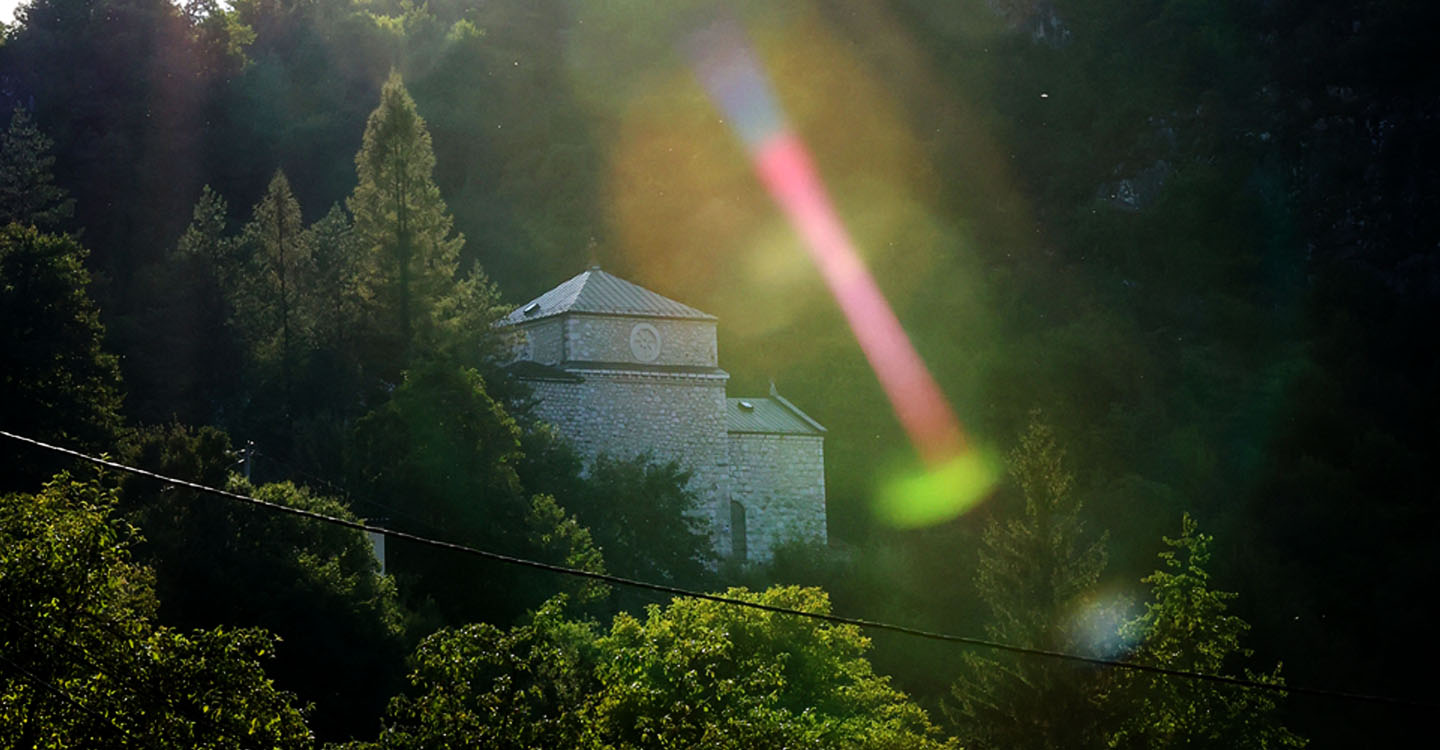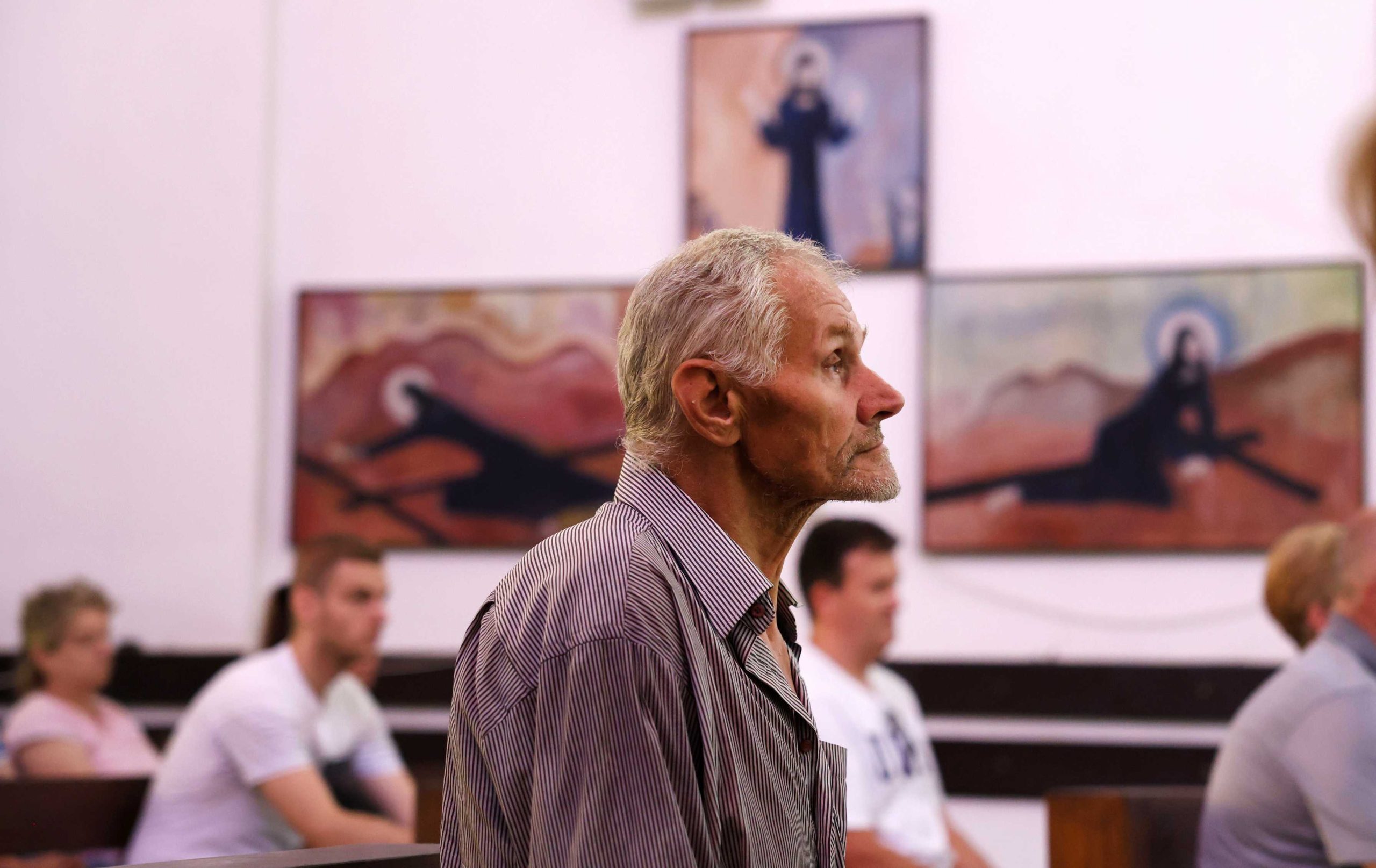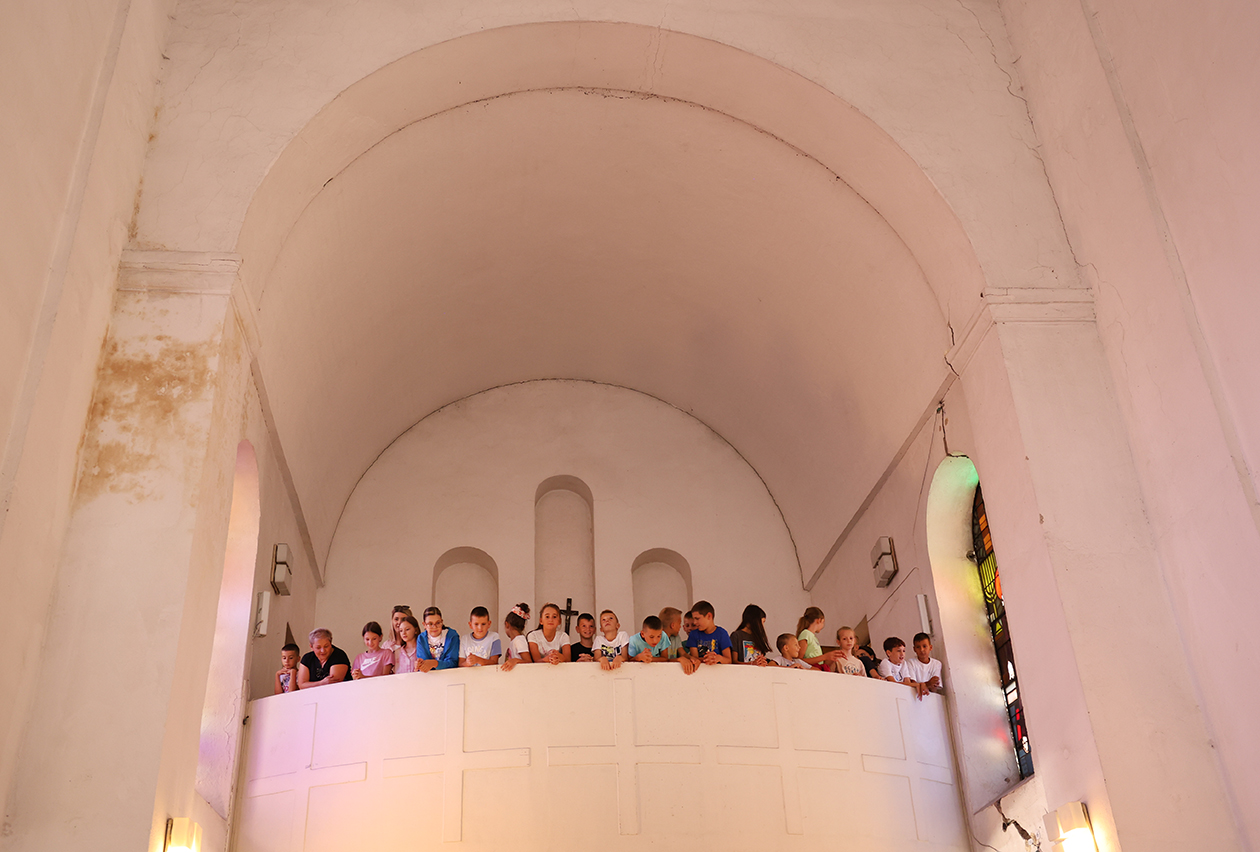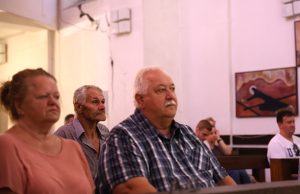
01 Oct PDF Bookled: Where Dwells My Soul
I have been living between the two worlds: the civilized one I have known all my life, and lately in the hills and charms of the oldest Marian Shrine in the Balkans.
The world known to me consists of the people I love, my work, and my dedication to serving the community. In it, I run from drinking and smoking, but I’ll sing and dance to the guitar all night. I hike the mountains, and I travel the world. I inhale the beauty of other people’s cultures, documenting the moments in front of me. Deepest feelings. And when asked to introduce myself: I breathe this life fully as it makes my spirit so alive that I look forward to waking up each day.
Then, just like that, I discovered the Shrine in Olovo.
Or what made my every return to the city like I was thrown to everything familiar, yet everything felt so distant. As if I was floundering, trying to find my place in the only life I know. While up on the hill, my soul dwells in its stillness and all it offers:
 And I am standing on its threshold under the buried foundations of the formerly famous Shrine, amazed that a church is being built right in the heart of Bosnia and Herzegovina, in the city of Olovo where generations before us fought for its survival. I am watching its only guardian, the Bosnian Friar, Ilija Božić, on his life’s mission trying to maintain this spiritual and historical treasure of Bosnia and Herzegovina, valued not only by Catholics but also by all religions because this is not just a church – this is the oldest Marian Shrine in the Balkans.
And I am standing on its threshold under the buried foundations of the formerly famous Shrine, amazed that a church is being built right in the heart of Bosnia and Herzegovina, in the city of Olovo where generations before us fought for its survival. I am watching its only guardian, the Bosnian Friar, Ilija Božić, on his life’s mission trying to maintain this spiritual and historical treasure of Bosnia and Herzegovina, valued not only by Catholics but also by all religions because this is not just a church – this is the oldest Marian Shrine in the Balkans.
 It was first mentioned by Bartholomew of Pisa in 1375. The first church was built in the village of Bakici, a few miles from today’s church, but now, only ruins are found there. But it speaks of the history of people who remember the significance of building a sanctuary in the first place after a painting of the Virgin Mary was found, and later unexpected healings contributed to the lives of not just Catholics, but Muslims too, and Orthodox, which is why the place remains accepted as the holy place by all faiths in Bosnia and Herzegovina. A few feet down the street from the Church is a mosque, and on the surrounding hill is an Orthodox church. But because of its long-fought history, the Catholics left Olovo.
It was first mentioned by Bartholomew of Pisa in 1375. The first church was built in the village of Bakici, a few miles from today’s church, but now, only ruins are found there. But it speaks of the history of people who remember the significance of building a sanctuary in the first place after a painting of the Virgin Mary was found, and later unexpected healings contributed to the lives of not just Catholics, but Muslims too, and Orthodox, which is why the place remains accepted as the holy place by all faiths in Bosnia and Herzegovina. A few feet down the street from the Church is a mosque, and on the surrounding hill is an Orthodox church. But because of its long-fought history, the Catholics left Olovo.
In 1463, Bosnia’s last Queen, Katarina, best indicates this. After her family made peace during the rough political leadership, she sent valuable gifts to the Church in Olovo. She felt her prayer while fasting had been heard. Then, her husband died and she was left with two children, but her stepson took the crown. He was soon executed by the Turks after conquering the Bosnia. Katarina’s other children fell into slavery and were converted to Islam, a new religion in this area. She then went to live in Rome where she was still trying to help the Kingdom of Bosnia, but did not succeed. She suffered for her homeland until her death.
Almost the entire Catholic population converted to Islam in Olovo. Some fled the country, but all left the city and its surrounding villages. At the time, only the guardian returned to the Friary. Hundreds of years later, following his steps and the steps of his other brother Friars, Ilija still tries to maintain the church and holds the Sunday Mass for those who remain.
All four of them.
 Mustafa, a Muslim by birth, who during the most recent war in Bosnia in the 1990s, was sent to the battlefield, deeply wished to be spared from shooting at anyone. He then found the Bible and was hiding in the forest, reading it. He was spared from any shooting. When the Church reopened in Olovo after the war, he walked 15 kilometers from his village to attend Sunday Mass. The other three members, Catholics by birth, come to church with Mustafa. The other three members, Paula, whose face is adorned with kindness, has been going to church for as long as she can remember – she often came with her son, sometimes hiding from her husband, Mato, who was in the Party at the time. And Mato proudly remembers the first time his mother brought him to the Church of Our Lady in Olovo. And generous Miran, remembers coming to church all his life.
Mustafa, a Muslim by birth, who during the most recent war in Bosnia in the 1990s, was sent to the battlefield, deeply wished to be spared from shooting at anyone. He then found the Bible and was hiding in the forest, reading it. He was spared from any shooting. When the Church reopened in Olovo after the war, he walked 15 kilometers from his village to attend Sunday Mass. The other three members, Catholics by birth, come to church with Mustafa. The other three members, Paula, whose face is adorned with kindness, has been going to church for as long as she can remember – she often came with her son, sometimes hiding from her husband, Mato, who was in the Party at the time. And Mato proudly remembers the first time his mother brought him to the Church of Our Lady in Olovo. And generous Miran, remembers coming to church all his life.

The Church was destroyed twice. Built from scratch twice. The first time in the 14th century along with the Friery, and the second time in the 20th century, after it was burned down in 1704 in a purposely set fire. The remains are the big circle or the “black stone” located next to the church, where believers light a candle. Many tried to fight to maintain the church. When in 1938, the stone was delivered to be placed at the altar, a Muslim man from Olovo promised to transfer it undamaged. After he completed the job, he said: “Why is everyone saying that we (Muslims) set the church on fire?” You see, we will help rebuild it!”
Ilija started renovating the Church in Olovo a decade ago, precisely on the foundations of the previous one because he noticed the danger of the cracked walls, and the facade falling, all because of the poorly done foundation. Ilija secured the funding to finish the first part of the project, hoping to continue the second phase: the construction of two rear towers and a colonnade that will connect them to the already existing front one, according to Checzk architect Karl Paržik.
 But llija could not have guessed his life’s path, when as a boy he walked ten hours from his birthplace to reach the Church in Olovo, that today he would be in his friar’s robe on the top of the hill holding a Mass for hundreds of people who still take this same road every year to celebrate St. Mary. “When we were children and finally reached Olovo, we’d look at the hills and think to ourselves how it feels like an eternity to climb just a few more steps..” Ilija recalls.
But llija could not have guessed his life’s path, when as a boy he walked ten hours from his birthplace to reach the Church in Olovo, that today he would be in his friar’s robe on the top of the hill holding a Mass for hundreds of people who still take this same road every year to celebrate St. Mary. “When we were children and finally reached Olovo, we’d look at the hills and think to ourselves how it feels like an eternity to climb just a few more steps..” Ilija recalls.
Because of his dedication to the church, pilgrims will continue seeing it as a symbol of healing, love, and peace. And Ilija’s fight for it is proof that the prayer has not been extinguished by fire. “We met here and 50 years later came to renew our vows,” said Ivan Nađ who traveled with his wife to see the Shrine again. Many friends revisit, but many others want to see the Church as well. I was a witness to a miracle as I was who opened the doors of the Church to a married Muslim couple and hikers from Zenica, Mirsad, and Aziza.
Though he hides from his accomplishments, as it often feels like an eternity to be remodeling the church, brothers Father Mislav and Father Marjan testify that Ilija contributed the most to the renovation of another church in Kraljeva Sutjeska, while he was a guardian there.
Ilija’s mission and determination made him a man who may live alone at the Shrine, but because of him, the Friary is rarely empty! He has lived up to the expectations of his brothers, and his role is much like the one of a protector of Bosnian spirituality and the future of pilgrims. Name Ilija is twice celebrated. Once by the Catholic calendar on July 20, when the Church celebrates Ilija as a saint, and when his friends fill the house to celebrate. Name Ilija is celebrated the second time on August, 2 – ironically on the same day when the church and friary were burnt 319 years ago. But on this day in 1752, the Holy Chair accepted the proposal to celebrate the name Ilija because both Muslims and Orthodox respect him as the patron saint of Bosnia and Herzegovina.
I’ve tried not to go to the Shrine, but I can’t leave even if I wanted to. The place is calling me.
There is a well there. And best I can describe the wonders of the Shrine, is as if someone poured a buck of water all over my soul, washed away all that once existed inside my spirit, and inscribed absolute peace within me–more peace than I had ever felt. More peace than when actual peace arrived in Bosnia in the 1990s. More than any forest offered on my hikes. More than any other religious place gave me. And whether there is no one at the Shrine, or if people come to celebrations, I still wake up with my spirit fully intoxicated. Yet I have not drunk. But it gives me the feeling that my entire body and soul are in absolute peace, with more joy, and more inner strength, and I tremble to ask if anyone else who visits, feels what I feel.
I tried not to go, but the place is calling me.
Imagine now, one day, I woke up and all this is taken away from me!
I too, would be returning to its ruins, placing brick by brick until built again. It becomes clear to me why the fight and the perseverance for its existence. And I am so proud of its survival.
I love being in the silence of its cracked walls in a moment of tranquility before I am brought back to reality by the sound of the bells that ring Mrs. Senija, a local Muslim woman who helps in the Friary. Then for the hundred time, I stand at the threshold under the buried foundations of the formerly famous Shrine gazing at what I found here: the soul of my country, Bosnia, that so loudly calls my spirit too. It is here I also witness my every prayer becoming a reality before I even get home. I am patiently waiting for the last stone to be placed on its walls so that this place will soon be filled with joy and the presence of those for whom Friar Ilija leads his mission – for those who have known it for a long time, and those who, like me, have just discovered it, and all those have yet to arrive and who will rejuvenate the soul of the oldest Marian shrine in the Balkans.

Views: 72






No Comments